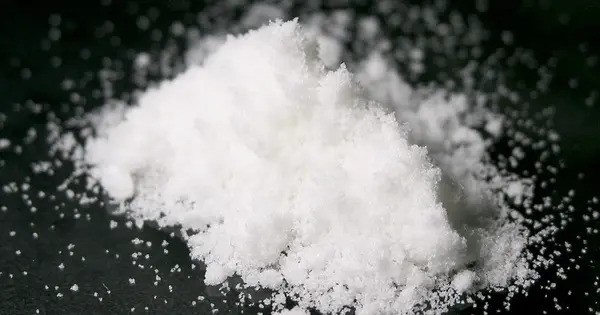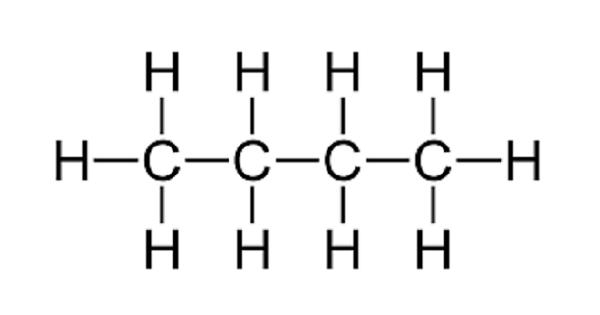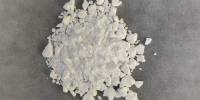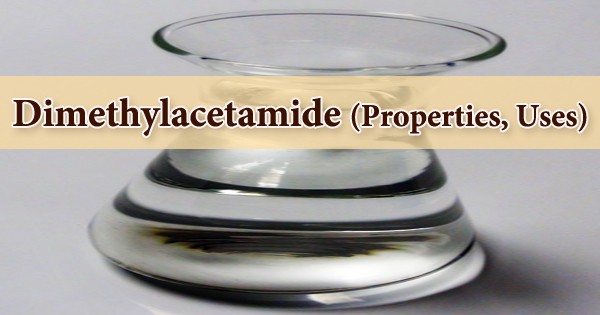Caesium chloride is the inorganic compound with the formula CsCl. This colorless salt is an important source of caesium ions in a variety of niche applications. CsCl crystallizes in a cubic lattice structure, where each cesium ion is surrounded by eight chloride ions and vice versa. Its crystal structure forms a major structural type where each caesium ion is coordinated by 8 chloride ions. Caesium chloride dissolves in water.
Caesium chloride occurs naturally as impurities in carnallite (up to 0.002%), sylvite and kainite. Less than 20 tonnes of CsCl is produced annually worldwide, mostly from a caesium-bearing mineral pollucite. It can be hazardous if ingested or improperly handled. It can cause health effects, so appropriate safety measures should be taken when working with it.
Properties
Caesium chloride is colorless in the form of large crystals and white when powdered. It readily dissolves in water with the maximum solubility increasing from 1865 g/L at 20 °C to 2705 g/L at 100 °C. The crystals are very hygroscopic and gradually disintegrate at ambient conditions. Caesium chloride does not form hydrates.
- Chemical formula: CsCl
- Molar mass: 168.36 g/mol
- Appearance: white solid hygroscopic
- Density: 3.988 g/cm3
- Melting point: 646 °C (1,195 °F; 919 K)
- Boiling point: 1,297 °C (2,367 °F; 1,570 K)
- Solubility in water1910 g/L (25 °C)
- Solubility: soluble in ethanol
Occurrences
- Natural Sources: Caesium chloride can be found in nature, primarily in the mineral pollucite, which is a source of cesium.
- Industrial Production: It is often produced synthetically for various applications, particularly in laboratories.
Applications
- Medical: Used in some radiation therapy treatments and as a tracer in certain types of research.
- Nuclear Chemistry: Acts as a dense medium in separation processes and in various forms of radiochemical research.
- Electronics: Used in the production of cesium atomic clocks due to its stable electronic properties.
Safety
While cesium chloride is generally safe to handle, it should be treated with care as cesium can react with water and is toxic in large amounts. Proper safety protocols should be followed when working with it in a laboratory setting.
















